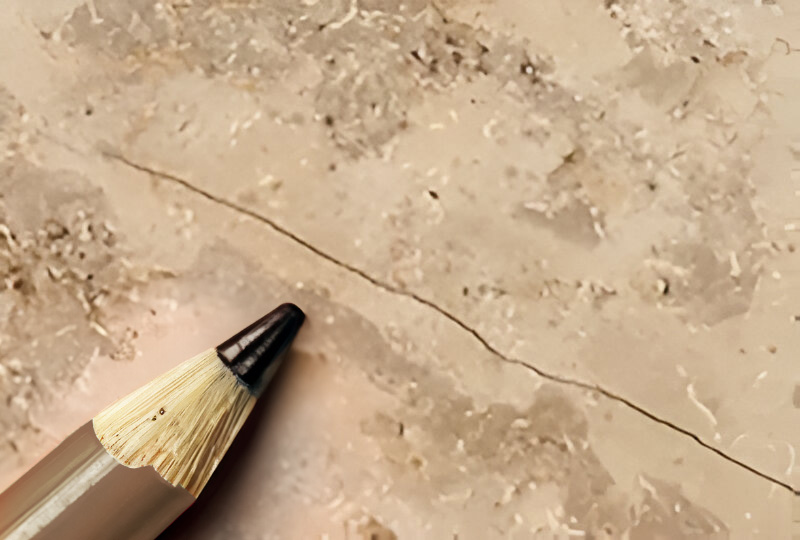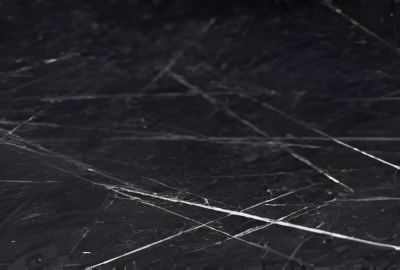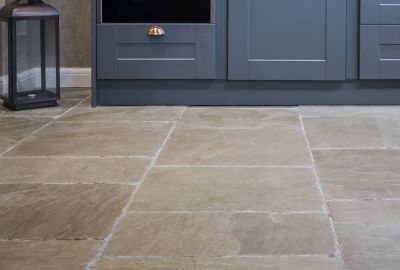Few things are more frustrating when installing a brand-new tile set than placing the finishing tile down, only to find that several of them appear to have cracks running through them.
No doubt your mind is already brimming with questions: Is this normal? Did I damage my tiles as I was laying them? Why are my tiles cracking? However, before you make a decision, it’s worth asking whether or not those cracks are actually simply a natural part of your tiles.
While tiles can certainly be damaged or cracked during transportation and installation, naturally occurring hairline fractures are actually a lot more common than you might think. So, to help you work out whether your new tiles are damaged or if you may just need to look into how to remove scratches from tiles, here’s what you need to know about natural cracks in tiles.

What causes hairline cracks in tiles?
When it comes to thin cracks in tiles, there are two main types you need to be aware of: hairline fractures and calcite veins, both of which are a natural result of stone formation and the tile manufacturing process.
Hairline cracks
Hairline cracks specifically are caused as a result of pressures applied to the stone during the cutting process, and while potentially imperfect, tiles containing them are assessed by our experts to ensure they’re still usable in your home.
In fact, hairline cracks in porcelain tiles are often actually the intentional result of manufacturers attempting to mimic the natural stone they’re based on and are deliberately created to authentically replicate the calcite veins found in many types of stone tiles. However, they are not actual cracks but just part of the design.
Calcite veins
A calcite vein is a seam of minerals found in a variety of different stones, particularly in limestone tiles and marble-effect tiles. They’re formed when the stone is subjected to great pressure, and the minerals form calcium carbonate crystals.
Over time, these calcite crystals interlock and form larger and longer veins inside the rock, which are eventually revealed when the stone is quarried. Their presence is entirely natural and does not mean there’s a defect or natural weakness in the tile. Instead, these lines are actually seen as an acceptable characteristic of natural stone tiles that add to their aesthetic charm.
Should I be concerned about cracks in my tiles?
Whether you've purchased natural stone kitchen floor tiles or bathroom wall tiles, regardless of their material, you will almost certainly come across a few tiles containing cracks. Once more, this is completely normal, and all tiles containing these cracks are checked well before they reach our customers’ hands.
In fact, many of the blocks of stone we use for tiling are inspected for flaws and hardness well before they even reach the manufacturing plant, before being tested again after tile production to ensure they meet the level of quality we expect in our tiles, meaning you can get to work on your next project safe in the knowledge that your tiles are of excellent quality.
However, while physically fine to install, we do understand that some customers find these sorts of unforeseen cracks aesthetically displeasing. In this case, we’d suggest laying them in areas that will be out of sight or using these tiles for the cuts that will line the edges of your room. And if you think the cracks are signs of genuine damage and you want to know how to fix hairline crack in tiles, read our guide that explains the DIY repairs you can make to stone tiles.
So, now equipped with a wealth of knowledge about calcite veins and hairline cracks, you should hopefully have an understanding of why you might be seeing small fractures through some of your tiles.
Of course, if you’ve decided you’d rather use a material that’s less prone to cracking, get in touch with the Stone Superstore team today. We’ll be able to advise on what other types of stone to use, as well as answer any other questions you may have, such as how to clean stone tiles. And don’t forget that you can browse the rest of our tile installation advice for more helpful pieces like this.



